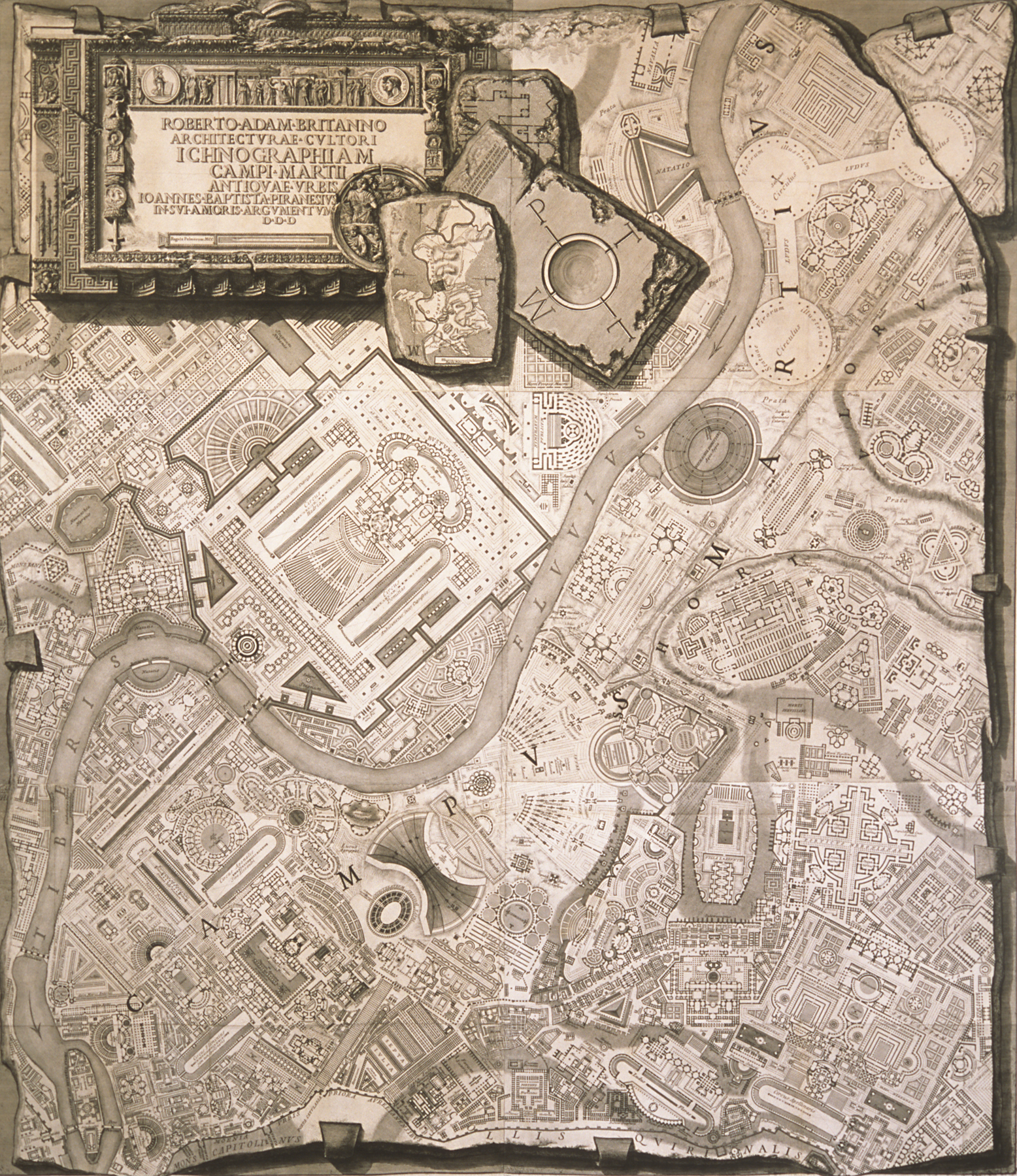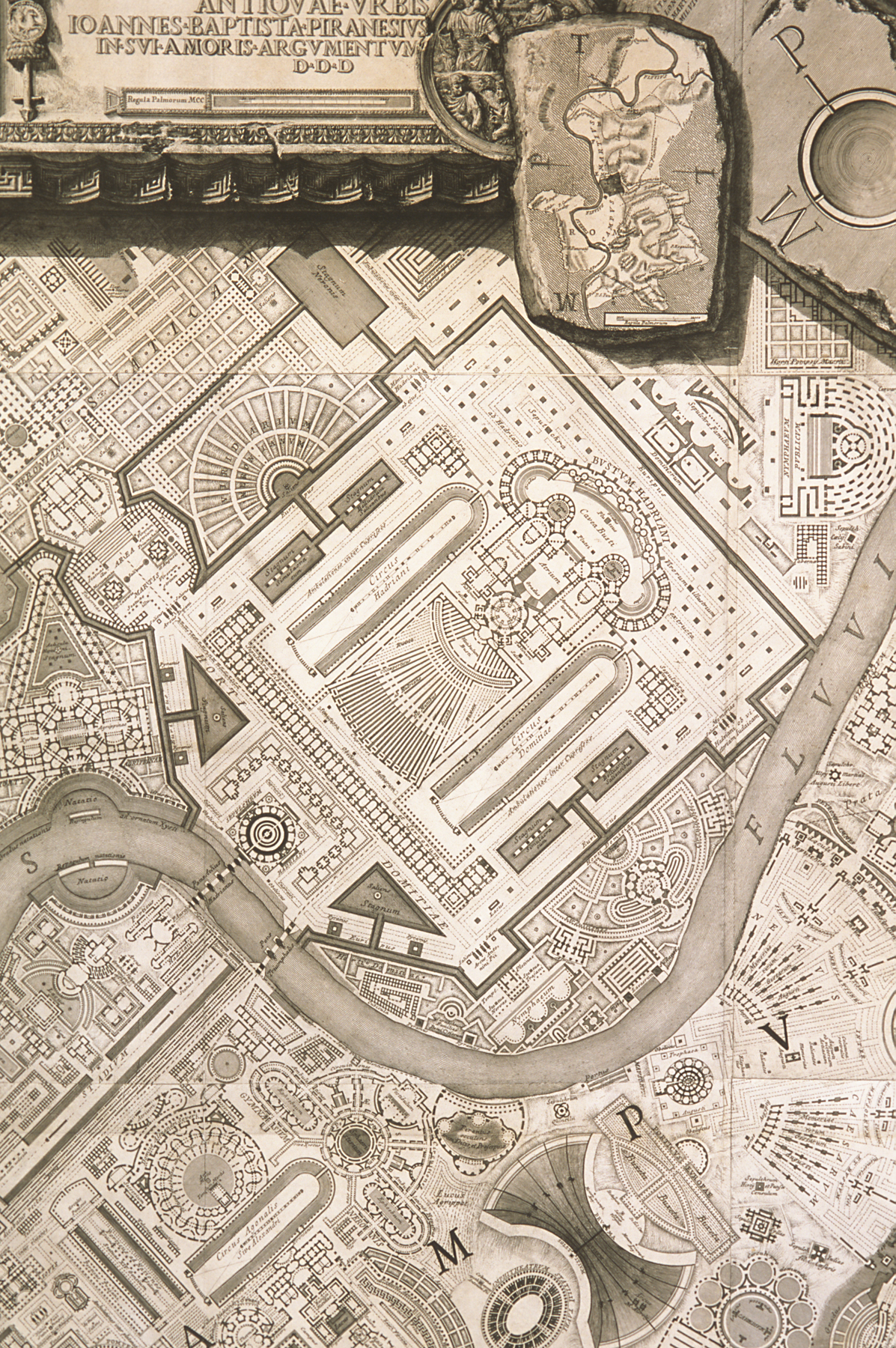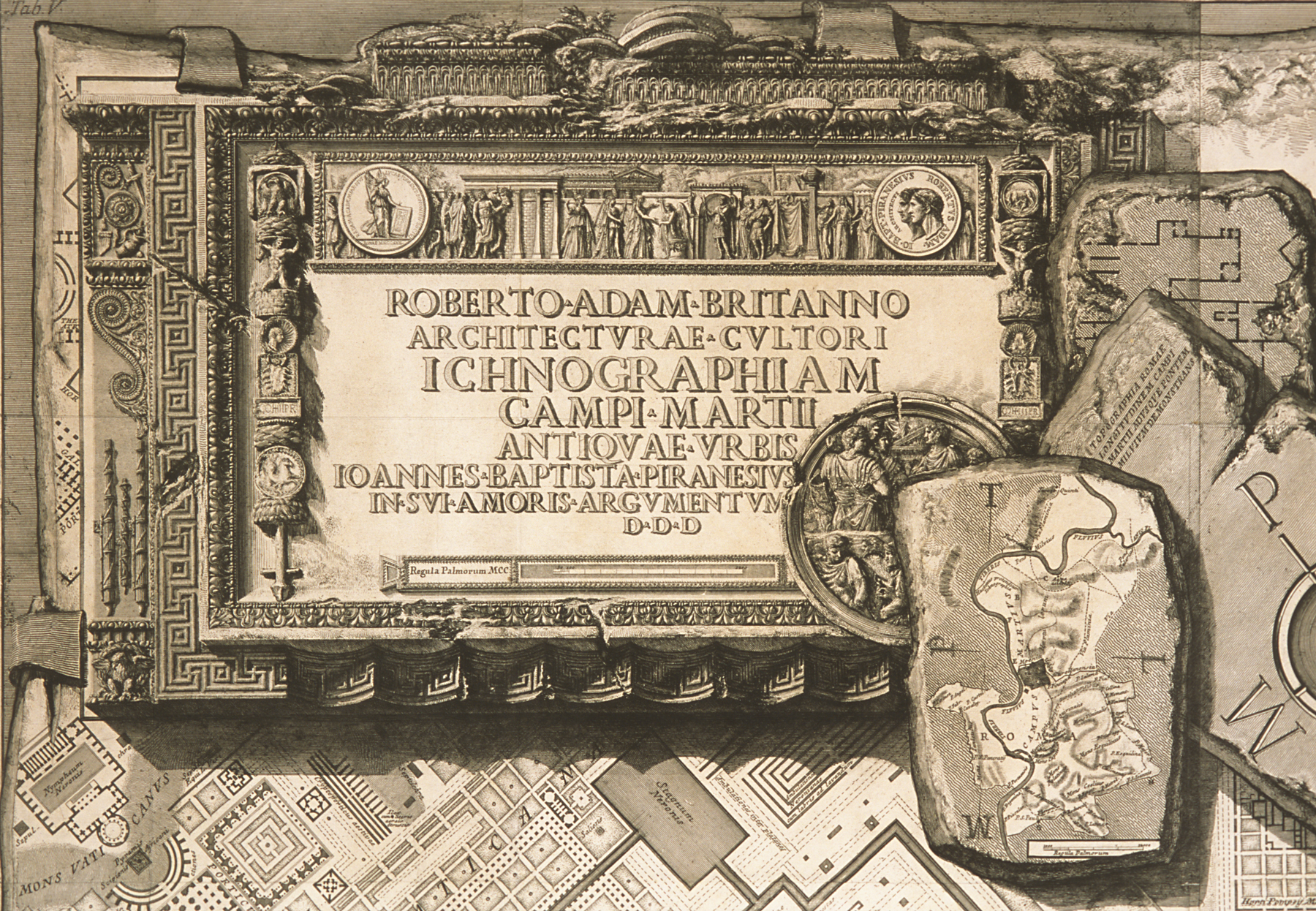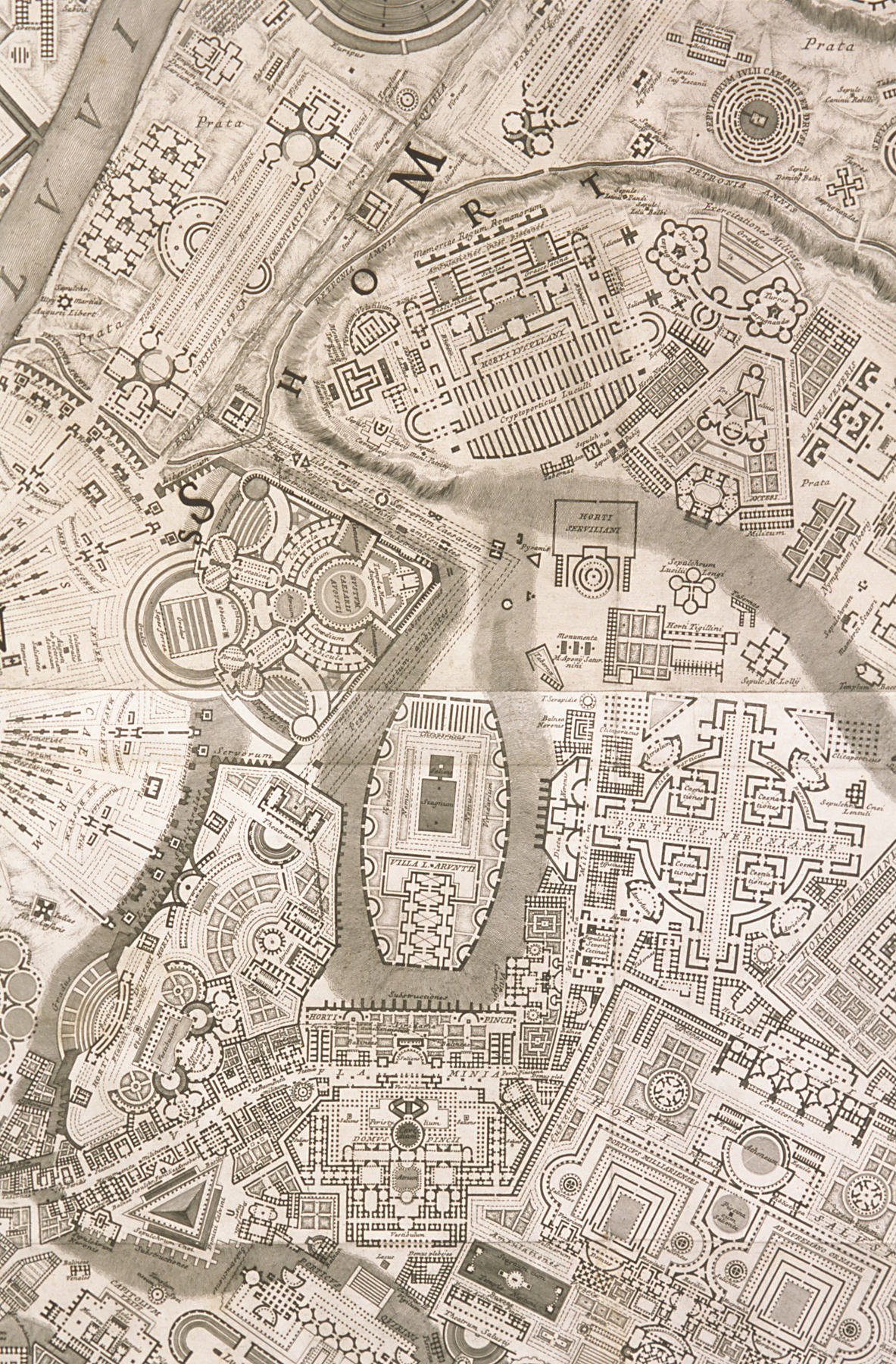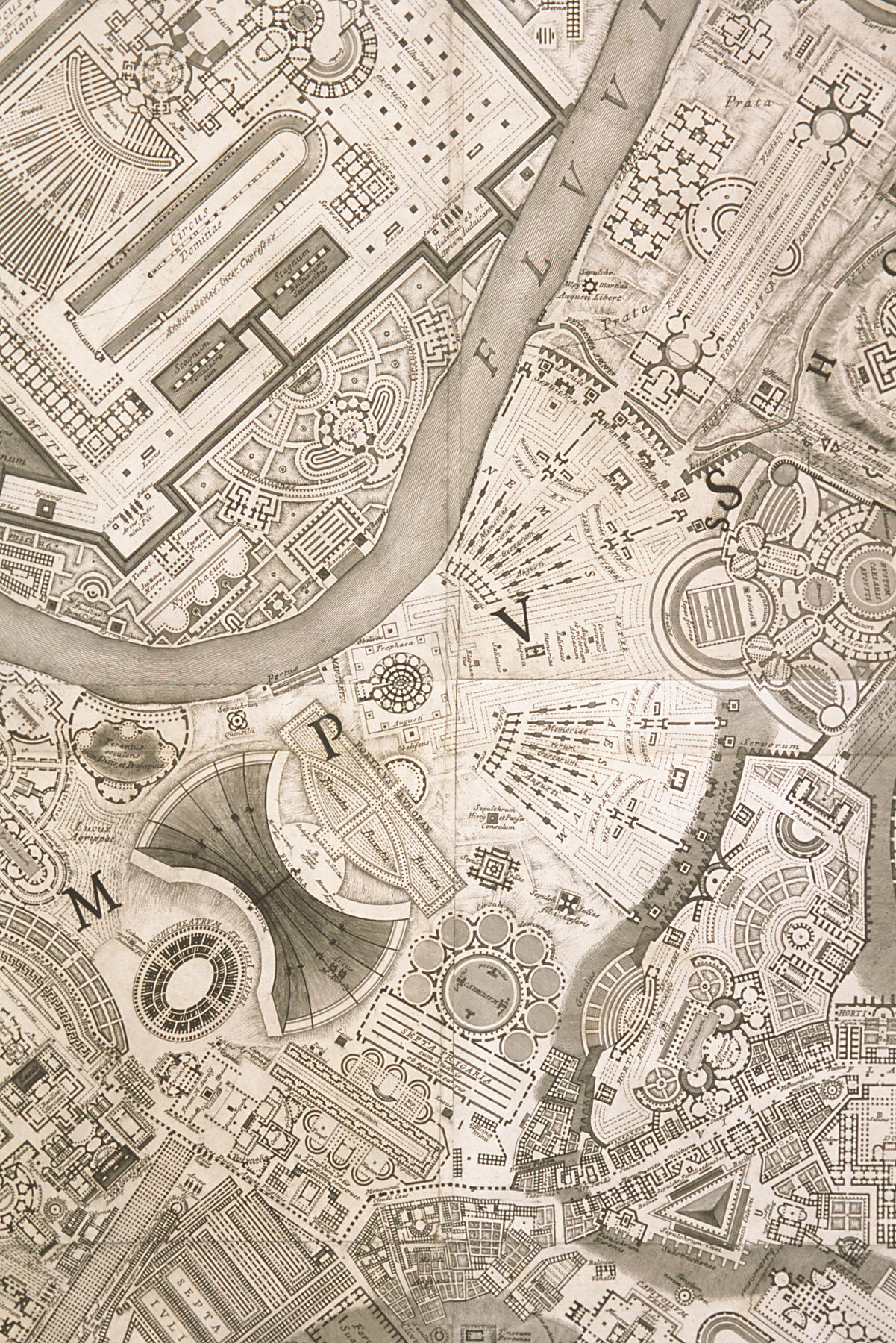Ichnographiam Campi Martii Antiquae Urbis ("Ichnographia," or Plan of the Campus Martius of the Ancient City), Giovanni Battista Piranesi
Artwork Overview
Giovanni Battista Piranesi, artist
1720–1778
Ichnographiam Campi Martii Antiquae Urbis ("Ichnographia," or Plan of the Campus Martius of the Ancient City),
1757
Portfolio/Series title: Campus Martius Antiquae Urbis (The District of the Campus Martius [literally the “Field of Mars,” a public area in ancient Rome] in the Ancient City)
Where object was made: Italy
Material/technique: engraving; etching
Dimensions:
Object Height/Width/Depth (Height x Width x Depth): 1330 x 1160 mm
Object Height/Width/Depth (Height x Width x Depth): 52 3/8 x 45 11/16 in
Frame Dimensions (Height x Width x Depth): 63 x 62 x 2 1/2 in
Weight (Weight): 41 lbs
Object Height/Width/Depth (Height x Width x Depth): 1330 x 1160 mm
Object Height/Width/Depth (Height x Width x Depth): 52 3/8 x 45 11/16 in
Frame Dimensions (Height x Width x Depth): 63 x 62 x 2 1/2 in
Weight (Weight): 41 lbs
Credit line: Gift from the John and Ann Talleur Collection
Accession number: 2001.0173
Not on display
If you wish to reproduce this image, please submit an image request
